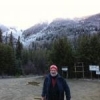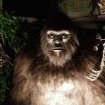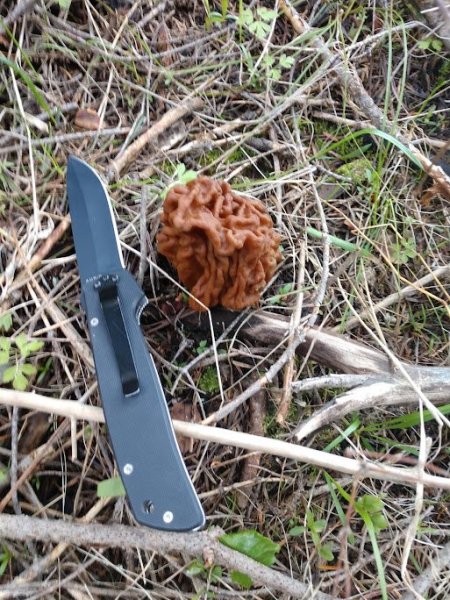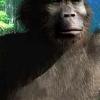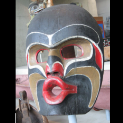Leaderboard
Popular Content
Showing content with the highest reputation on 05/08/2022 in all areas
-
There easily half-dozen different location in the PNW to select. Would be tough to pick one. Olympic peninsula, St. Helens, Olympia area I've all had BF interactions. But would be fun to have interactions in new areas. As far as a dream team.... I would have to have the four horsemen: Krantz, Greene, Dahinden and Byrne. Even thought they all didn't get along, they're the 4 horsemen, c'mon.... who better from a historical standpoint? For other "passed" individuals, it'd be: Bindernagel, Freeman, & Napier (only to get him to admit BFs are out there, LOL) For current big name BF'ers, how could you choose?: Barrackman, Meldrum, Brown, Shay, Lieterman, Randles, Raymond, Cupertino, Fay, Knoll. How about people from this board? @NorthWind @Madison5716 @norseman, thanks for all your posts and the sharing that you do. But this is an exercise in personal likes and experiences from reading books and posts and listening to interviews... So it would be extremely hard to pick any particular individuals, there have been so many great individuals for many different reasons. My dream team would be anyone who can keep an open mind, keep an eye out for anything that is different and can keep their cool when wood knocking, screams and stomping is going on around you.2 points
-
reprinted with permission 4/5/2022 The RELICT HOMINOID INQUIRY 7:117-134 (2018) Research Article THE ECOLOGY OF AN UNCATALOGUED HOMINOID IN THE BOREAL FOREST (TAIGA) OF NORTH AMERICA AND EURASIA John Bindernagel* Courtenay, BC, Canada *Correspondence to: Editor, email: meldd@isu.edu © RHI ABSTRACT Accumulating trace and physical evidence, combined with Aboriginal traditional knowledge and experience, suggests the existence of an uncatalogued hominoid in the Holarctic. Skeptics challenge that a large hominoid would not be adapted to the severe climate and limited food resources of the northern latitudes. In this paper, I address ecological aspects of hominoid research, which both Eurasian and North American researchers share in common. It concerns a major habitat apparently occupied by this hominoid, the boreal forest biome or taiga, which is the largest biome on Earth. It is a unifying theme, which we continue to investigate in our attempts to understand how this hominoid survives in this biome. KEY WORDS: sasquatch habitat, feeding, overwinter survival, Aboriginal culture, tracks INTRODUCTION In preparing this paper1, I was reminded of a source of resistance, which this conference, by its international nature, speaks to. This is the problem of the number of different regional names for this hominoid. Some names are countrywide or even continentwide in their use (Fig. 1). Like some investigators, I have become convinced that all these hominoids are either the same or very closely related. But because this hominoid is known by different names in different countries, many scientists do not realize that investigators may be discussing the same or closely-related species. Many names for this hominoid are regional, local, or restricted to ethnic or cultural groups. In Canada there are over thirty names assigned to this hominoid by aboriginal peoples. Within Russia, a similar situation apparently occurs (Fig. 2). Just as the scientific community remains unaware of the circumpolar distribution of the hominoid in the boreal forest of three continents, so too various aboriginal groups appear to be unaware that the hominoid they refer to with a specific name may be the same hominoid known to neighboring groups of people elsewhere in their country. This problem was pointed out clearly in the writing of Dmitri Bayanov (1996), who noted that most of the ethnic groups he worked with in Russia perceived the hominoid as restricted or unique to their region. The use of the term “hominoid,” as used by Bayanov in his writing, is a useful and inclusive term and has been adopted for use in this paper. 1 As presented at the International Scientific and Practical Conference on Hominology, Moscow and Mountain Shoria, Russia, October 5-8, 2011. Physical Evidence for This Uncatalogued Hominoid in North America It may be useful to briefly review the forms of physical evidence supporting the existence of this northern hominoid in both North America and Eurasia. In North American there are literally thousands of eyewitness accounts describing this hominoid and its behavior. Although these eyewitness descriptions and drawings have been of great use to investigators, they have not attracted the attention of scientific colleagues who remain unaware of the many points of widespread anatomical similarity in this evidence. Nevertheless, it may be worth noting that eyewitnesses have described and depicted adult male, adult female, and subadult or infant hominoids, suggestive of a biological population (Fig. 3). Tracks It is physical evidence that may eventually prove to be most useful in convincing scientific colleagues to scrutinize the evidence which supports the claim of an extant hominoid in North America and Eurasia. Hominoid tracks, when documented in photographs and as casts, provide the necessary corroborating evidence for this hominoid as a track-leaving mammal (Fig. 4). Unfortunately, in North America, the value of track casts as physical evidence has become tainted by claims of hoaxing, which have influenced scientific colleagues and kept themfrom fully engaging this form of evidence. Even though the fabricated hominoid “feet” brought forward by hoaxers do not resemble actual hominoid tracks, the North American media – and even scientists – have accepted such hoax claims as invalidating all, even potentially actual, hominoid tracks (Fig. 5). Twisted and Bent Saplings Another form of North American physical evidence that warrants scientific attention is tree modification or damage in the form of twisted and bent saplings. This evidence has not been widely investigated or scrutinized, and its link to this hominoid is not yet firmly established. Nevertheless, it is a phenomenon otherwise unexplainable and may be a form of marking by this hominoid. Similar sign have been observed in Eurasia (Fig. 6). Nest-like structures Similarly, there are nest-like structures which appear to have been made by this hominoid in North America and which are not otherwise easily explained. The first was photographed in a remote area of central Washington. The second is a crude shelter constructed of bark slabs and matted twigs on top of a low tree branch, open at two ends. It was observed on the Olympic Peninsula in Washington State. Hominoid Ecology, Especially Food Habits The main subject of this paper is the ecology of this hominoid, and especially its food habits. Investigators attending this conference support the claim that this hominoid exists, and in addition, that it exists in the boreal forest or taiga of both North America and Eurasia. Those of us called upon to defend this claim have become aware of a particular criticism against it. This criticism has been summarized as follows: The creature is not currently recognized or cataloged by science, which generally reject the possibility that such mega-fauna exist, because of climate and food supply. This criticism is, of course, a theoretical objection, which states that, ostensibly, the climate and food resources of some of the regions where this hominoid is claimed to occur, cannot support it. One such region is the boreal forest or taiga (Fig. 7). There is, however, physical evidence supporting the existence of this hominoid in this biome, inhospitable as conditions may be. Physicist Michael Friedlander once defended evidence which may appear to lack a theoretical basis, or which appears to oppose theoretical objections: It is the reality and correctness of the observations that must be examined, and the theory will follow in due course if the observations are correct (Freidlander, 1995). Friedlander’s point – when applied to this situation – is that prevailing theory may not support the existence of an uncatalogued hominoid in the boreal forest of North America or Eurasia. However, if the evidence of eyewitnesses and the physical evidence of tracks is valid, then a theory will subsequently emerge to explain its existence there. If the serious attention of scientific colleagues is to be attracted to reports of this hominoid in the boreal forest, it will be necessary to demonstrate its potential ecological viability in this and other biomes. The Marine West Coast Forest Biome of North America Before addressing the boreal forest biome as hominoid habitat, it may be useful to address a narrow strip of land and sea coast at the western edge of the boreal forest on the west coast of North America. This region is known as the “Marine West Coast Forest” (Fig. 8). Although it is less than a hundred miles (160 km) in width, it is considered a biome, a unique habitat. It is basically the interface between the boreal forest and the north Pacific Ocean, extending from northern California to Alaska. Because it includes the rich intertidal zone, this habitat probably supports the highest density of this hominoid in the world and it is here that the criticism of climate and food supply to support a population of this hominoid is most readily countered. The richness of food resources in this biome transcends that of the boreal forest, especially during the autumn when salmon spawning occurs and during the winter when the clam beaches are exposed at low tide under the cover of darkness. Aboriginal Culture as Evidence of the Richness of the Marine West Coast Biome of North America Evidence for the biological richness of this habitat is the well-documented ability of the Aboriginal people of this coast to not only survive, but to thrive and develop sophisticated art forms. Art was applied to everyday items such as clothing and even to boxes used for food storage. Carved masks and crests on totem poles are well-known examples of Aboriginal art in this region. Not surprisingly, this art depicts the animals and birds with which the aboriginal people share the environment. Some of these animals, such as the frog, are easily identified. Others require some knowledge of the species depicted such as the beaver, which exhibits large incisor teeth and a characteristic broad flat tail, and which holds a stick in its front paws. Then there is the dzonokwa, the Wild-Woman-of-the-Woods, whose characteristics include giant size, pursed lips, and pendant breasts (the pendant breasts are especially reminiscent of a number of Russian eyewitness descriptions of the hominoid in the Caucasus region and elsewhere). Not surprisingly, most cultural anthropologists have considered the dzonokwa to be a mythical being in the sense of supernatural. Most hominoid investigators, on the other hand, recognize dzonokwa as a depiction of a female hominoid. In addition to the representation of thishominoid in aboriginal carvings, there are reports to anthropologists of this hominoid from the north coast of British Columbia, where it is known as the “boqs.” The boqs was described to an anthropologist by an Aboriginal informant as follows: “This beast somewhat resembles a human... It walks on its hind legs, in a stooping posture, its long arms swinging below the knees...” ( McIllwraith, 1926). Despite the anatomical details provided by the informant, the anthropologist included it in his published report as one of several “supernatural animals” that he had heard described. Regarding the anthropologist’s categorization of this animal as supernatural, it should be noted that a folklorist once cautioned: It cannot be proven that the Indians themselves saw these creatures as mythical, but anthropologists and other scholars have generally considered them as such (Henderson, 1976). This misunderstanding is another point of common interest to investigators in both North America and Eurasia – a widespread perception and a body of anthropological literature in which hominoids described by members of aboriginal or ethnic groups are treated as mythical or supernatural by cultural anthropologists. Unfortunately, it is the cultural anthropologists who have traditionally been consulted as representing the scientific discipline with appropriate expertise to interpret such reports. The published views of cultural anthropologists consequently form the preponderance of prevailing knowledge with regard to uncatalogued hominoids. The Deciduous Forest Biome Before addressing the boreal forest biome itself, there is another biome that warrants discussion. Like the rich marine west coast forest of northwestern North America discussed above, this biologically rich biome also lies adjacent to the boreal forest biome. This is the “temperate deciduous forest biome.” This biome may rate second only to the marine west coast forest of northwestern North America in its biological richness. Like the boreal forest, it occurs around the world but in discontinuous patches in eastern North America, central Europe, and eastern Asia (Fig. 9). The richness of this biome is attested to by the extent to which it has been developed for agriculture by modern humans and by the high density of the human populations, which occupy it. However, there are still remaining large patches of deciduous forest in this biome, which support this hominoid in North America and Eurasia. Food sources here include nuts, berries, and a plethora of small, medium, and large mammals, as well as waterfowl and upland game birds such as grouse and wild turkeys. Boreal Forest Biome (Taiga) Finally, this discussion of biomes addresses the boreal forest or taiga, that globe-encircling biome, which unifies research into the ecology of this hominoid. This biome is clearly occupied by the hominoid under study, but perhaps not in large numbers. It is this biome that is particularly singled out by skeptics because of its adverse climate and insufficient food, conditions perceived to preclude the existence of a large hominoid in this habitat. The criticism is not without some merit, and gives rise to the question: Since, even in summer, this biome appears to provide only meager food resources, how then does this hominoid manage to survive the winters in a region in which winter conditions are characterized by severe cold combined with significant snow cover? This question addresses the subject of hominoid food habits, a subject that includes feeding methods and feeding strategies. Feeding Methods or Feeding Strategies There are several methods or strategies, which this hominoid appears to use to obtain food throughout its range. Foraging Berries, seeds, and aquatic plants are obvious examples of wild fruit and vegetation, which are available through foraging or gathering to both this hominoid and to modern humans. On the coasts, shellfish can also be obtained by foraging. The name “Cockle-eater” applied to this hominoid by Aboriginal people on the British Columbia coast of Canada is especially interesting. Cockles are a species of clam preferred by both Aboriginal people and this hominoid. These clams are unique because they lie near – or even on top of – the surface of the beach, are easily obtained by foraging with no need for digging. Another form of meat which can be obtained by foraging and digging are hibernating ground-squirrels. A detailed report from the mountains of Oregon describes the observations of a man who watched a sasquatch dig up hibernating ground squirrels and eat them. The pit dug by the sasquatch in loose rock was some 5 feet (1.6 meters) deep. Several ground squirrels, along with bedding material consisting of moss and grass, were extracted from the pit and eaten whole. Before digging the pit, the sasquatch had picked up rocks, smelled them, and then stacked them in piles as it apparently tested each rock for the odor of ground squirrels (Fig. 10). Interestingly, a report of a hominoid feeding on ground squirrels in Tajikistan was described by Dmitri Bayanov. In this case, the hominoid appeared to have dug up soil to extract ground squirrels from their burrows. Bayanov referred to other reports suggesting that ground squirrels and other rodents may be an important source of protein for hominoids. Predation There are several North American accounts of this hominoid actually catching a deer after a short chase, breaking its neck, and carrying it away. The Russian literature records that in eastern Siberia, this hominoid feeds on wild deer. In northern Russia, it was reported to hunt reindeer, by investigator Vladimir Pushkarev. Regarding predation, the structure observed and photographed in Washington in 2009, may be of interest. This structure makes most sense as a hominoid “blind” or “hide” for use by the hominoid functioning as an ambush predator on elk or wapiti (known as “red deer” in the UK, “maral” in much of Eurasia, and “Siberian stag” in Siberia). This hypothesis is based on its construction in an elk feeding area, which is possibly also an elk calving area. The structure, although crude, required considerable manual dexterity to construct the roof of matted twigs, but is unlikely of human origin. For now, however, its origin and purpose must remain undetermined. If this structure is a hunting blind, it might qualify as a tool, used by the hominoid as an aid to procuring food. The possible use of tools to obtain food is a recurring subject with regard to this hominoid. For example, a Russian report from Tajikistan includes a suggestion by local people that forked sticks found near the entrance holes to rodent nests may have been used by this hominoid (named “guls” in that area) to catch mice. Similarly, the use of a stick to dig clams has been mentioned in several North American reports. In addition, the use of a stick as a club by a hominoid to intimidate deer and to bludgeon waterfowl has been reported in North America. A British Columbia eyewitness once heard the sound of something slapping the surface of the water near shore in a shallow west coast bay. Approaching the sound by walking around a point of land, she was confronted with a soaking wet hominoid holding a stick in one hand and several ducks in the other. Food stealing, piracy, or appropriation In northwestern North America, there are many reports of hominoids availing themselves of salmon caught by Aboriginal people. This activity includes taking salmon from nets, and from drying racks and smoke houses where Aboriginal people were preserving salmon for the winter use. A similar situation may sometimes apply to the stealing of game carcasses. In North America, there are several reports of this hominoid taking a game carcass from hunt camps or logging camps where a deer carcass has been hung overnight. A report presented by Dmitri Bayanov from the Chukchi Peninsula suggests that it is common knowledge there that a game carcass left overnight would be gone by morning “with hominoid footprints around the location,” the meat taken. Overwintering strategies: hibernation or torpor This discussion of food acquisition leads to the possibility of food storage and to the larger issue of specific overwintering strategies. Several reports from northern Russia reveal the belief of local people that this hominoid “sleeps” or “hibernates” during the winter. This belief is based partly on the relative absence of sightings in winter or tracks in snow. When the Russian investigator Vladimir Pushkarev concluded that the “annual biological cycle” of this hominoid in northern Russia is “close to that of the brown bear,” he was implying a period of hibernation or torpor during winter. Similarly, Russian investigator Maya Bykova quoted a man from the Komi region of Siberia, stating that “at this time of year [October] he usually sleeps.” The idea of hibernation or a period of torpor is supported to a large extent in northern North America by the similar rarity of hominoid tracks in snow. On the other hand, at least some hominoid tracks are observed in snow and there are some eyewitness reports of hominoids in winter both in North America and northern Eurasia. This suggests a possible overwintering strategy as used by bears, that is, a period of torpor, or reduced activity, during periods of severe cold or periods when food is unavailable or severely limited. Storing food in “caches” There is an overwintering strategy used by an unrelated mammal of the boreal forest and tundra, the wolverine (Gulo gulo). This strategy is food “caching” or the storing of meat in underground burrows, crevasses, or snowbanks. Wolverines reportedly capture birds and mammals and store their carcasses as food not only for winter use but even for extended use into the spring when the young are born. The use of this strategy elsewhere in the animal kingdom raises the question: “Could this hominoid employ a similar strategy?” Steatopygia: fat storage in the body, especially the buttocks A report from the Kola peninsula of northern Russia includes an interesting comment by a senior game warden who was called to investigate the reported activities of a hominoid that had been interacting with a group of campers in late summer. Reflecting on his brief observations of the hominoid, he stated: “What especially struck me was its big round...buttocks.” An even more remarkable report on this subject was recorded by Dmitri Bayanov, from the border region of Russia and China in eastern Kazakhstan. This report refers to these hominoids being hunted as food, and the fat from the buttocks being used as cooking fat. The deposition of fat in the buttocks of humans (steatopygia, which means “fatty rump”) is best documented for the Khoisan people of Africa, including the Khalihari bushmen who live in a desert of southern Africa. Female Khoisan people are noted for their ability to store fat in their buttocks in advance of the dry season, a period of extreme food deprivation. Migration A vertical migration downward from high elevations to lower elevation in winter is a well recognized wintering strategy of ungulates such a deer, elk, moose, and wild sheep in the mountainous areas of North America and northern Eurasia. This is a natural response to the cold and snow of high elevation in winter and the comparatively milder temperatures and reduced snow depth, which prevail at lower elevations. On the west coast of North America, such a downward migration is hypothesized for this hominoid, where it may explain its increased presence on coastal clam beaches in winter. A vertical migration is particularly easy to understand in this region, where the mountainous summer habitat lies in close proximity to the clam beaches. Such a winter migration has been suggested for this hominoid in Tajikistan. Local people there explained its absence from the mountainous areas that predominate in this region, by migration to the low elevation area in the south of the region (Bayanov, 1996). CONCLUSION The historical and contemporary observations of an large upright hominoid in North America and Eurasia, finds corroboration in the accumulating trace evidence – tracks, tree breaks, nests, etc. The objection that the climate and food resources of the northern biomes are unsuited for a hominoid is not without merit, but clearly not wholly justified. This discussion of feeding and overwinter survival in the boreal forest raises the question: Why would the hominoid choose the boreal forest biome as a home when richer habitats exist not far to the south? There are at least two possible answers to this question: (1) The first is that modern humans occupy those rich and fertile habitats to the south, especially the temperate deciduous forest biome. A natural shyness on the part of this ominoid may account for its reluctance to compete with modern humans there. If this hypothesis is correct, then it suggests that the hominoid may live in the boreal forest not by choice, but may have been pressured to retreat from more favorable habitats – displaced by expanding human populations. This could explain why small populations of the hominoid persist in remaining patches of wilderness within the temperate deciduous forest biome, but why it is more widespread in the less-occupied boreal forest biome. (2) The second answer is that these hominoids appear to be well-adapted to temperate, even subarctic environments. As such, they – like Aboriginal people of the northwest coast of North America – may be more comfortable with cold conditions, than are other humans. LITERATURE CITED Bayanov, Dmitri. In the Footsteps of the Russian Snowman. Moscow: Crypto-Logos, 1996. Freidlander, Michael W. At the Fringes of Science: Science, Science Contested, and Pseudoscience. Boulder: Westview Press, 1995. Henderson, Carole M. Monsters of the West: the Sasquatch and the Ogopogo, In Folklore of Canada, ed. Edith Fowke (ed.) Toronto: McClelland and Stewart, 1976. McIllwraith, Thomas F. Certain Beliefs of the Bella Coola Indians Concerning Animals, 35th Annual Archaeological Report 1924-1925 (being part of) Appendix to the Report of the Minister of Education, Ontario: Toronto, R. B. Orr (ed.) (Toronto,1926), pp. 19-20; T. F. McIlwraith, TheBella Coola Indians, vol. 2. Toronto:University of Toronto Press, 1992. I am a professional wildlife biologist, who is seriously studying the sasquatch or bigfoot in North America. My interest in this animal began in 1963 when, as a third-year-student in wildlife management at the University of Guelph in Ontario, Canada, I was laughed at for raising the report of an animal described as an “ape-man” for possible discussion. My fieldwork began in 1975 when our family moved to British Columbia, partly in order for me to begin fieldwork on this species. In 1988, my wife and I found several sasquatch tracks in good condition in the mountains not far from our home on Vancouver Island. Plaster casts, which we made from these tracks provided the first physical evidence for the existence of the sasquatch. Wildlife biologists such as myself regularly depend on tracks and other wildlife sign as evidence for the presence of bears, deer, wolves, and other mammals, recognizing that tracks constitute a more reliable and persistent record of the presence of a mammal species in an area than a fleeting glimpse of the animal itself. I am satisfied that the sasquatch is an extant (or “real”) animal, subject to study and examination like any other large mammal, and am much more concerned with addressing ecological questions, such as how it overwinters in the colder regions of North America, than with dwelling on the controversy of whether it does or does not exist. I remain aware, however, that many people – including scientific colleagues – remain unaware of the information that exists about this species. [Editor’s Note: John Albert Bindernagel, 76, passed away during the evening of January 17, 2018. He published two influential monographs, the first in 1998 entitledNorth America's Great Ape: the Sasquatch. His second book, The Discovery of the Sasquatch – Reconciling Culture, History, and Science in the Discovery Process, was published in 2010. As a personal friend and professional colleague, he will be sorely missed. See RHI 7:1-5 (2018).]1 point
-
In 1994 or 95, I was still living in Minnesota. The eastern portion of the state is thickly forested, and where I grew up was no exception. The underbrush can be very difficult to get through, let alone see into. The summer leaves make for ideal cover. I went bear hunting with a friend of mine that late summer/ early fall. Bear baiting is legal and an accepted practice there, at least it was. You could go to most grocery stores and bakeries and get a pickup load of food for free. You had to check back almost everyday, most hunters would be looking also. Sweets made for the best bait pile. We would just throw it on the ground at likely places. Some scouting beforehand would be ideal, of course. We had one bait pile hit out of three, I believe. A bear will absolutely destroy the bait. It looks like a small tornado has gone through, lol. My friend was going to sit in his tree stand above the bait pile, and we decided to set out “honey burners” to attempt to attract the bear. To make a honey burner, we took two coffe cans. A 5lb and a 1lb sounds right, but I don’t drink coffee, so my memory may be fuzzy. (It’s actually quite fuzzy from time to time.) we drilled 4 holes in the 5lb can to put a couple metal rods through to hold the 1lb can up from the bottom of the other can far enough to put a can of lit sterno under it. We then poured honey into the 1lb and wired the contraption to a tree. We each had a burner set up and we were about 200 yards apart. The smell of the honey was thick, as there was only a slight breeze. I only had a burner going. No bait pile. We could not see each other at all. I sat in my portable tree stand for a few hours, and along about dusk, something in the brush behind the burner started to growl at me. Deep, guttural grows. The growls were loud. I thought there was a bear back there, naturally, I was bear hunting, what else could it be? Lol. Those growls were quickly turning into a underwear changing moment for me. Then a tree in the background started to shake. Like, whip back and forth like nothing I had ever saw before. The top of the quaking aspen, (pople in Minnesotan) was somewhere around 15 feet off the ground, and the very top was shaking so fast. I don’t even know how to describe it. The growls intensified dramatically. I switched the safety of my .270 off. Then it just quit. The silence was deafening. The 200 yard walk to my friend was long, I tell ya. When I got there, we walked out together. It was almost completely dark by then. I never returned to that spot after I retrieved my stand the next day. I never considered this a Sasquatch encounter. I hadn’t even heard of tree shakes being a thing until about 8 years ago. When I heard about Sasquatch shaking trees, I instantly remembered this experience. At that time, I thought the PNW was the only place Bigfoot lived. Had I known then, I could’ve looked for tracks. I could’ve looked for bear tracks too, but those growls made me not want to know. So, I have no clue if this was an encounter or not. And I’m still just as happy to not know.1 point
-
If you could pick your "dream team" of Squatchers/researchers and your dream location to go searching for say 2 weeks, who would they be and where would you go? I think for me, I would keep it in Oregon on the "Bigfoot Highway" past Estacada down to Ripplebrook. I'd bring along Joe Beelart, Tom Shay, Shelly Covington-Montana, Cliff Barackman, Mireya Mayor, and Jeff Meldrum. Beelart is familiar with the area and literally wrote the book on it. Shay and Montana are excellent trackers and outdoorspeople. Barackman because he is Barackman...lol. Mayor (though i find EB laughable & overdone for drama) and Meldrum for the science. And at the very least, it'd be fantastic conversation around the campfire.1 point
-
Today, I did some morel mushroom hunting and bigfoot searching and just carried one of my larger folders. It's a Camillus Titanium and the quick open action is garbage, but the blade is Aus 8, big, and a design I like, so I bought it on clearance for $28 last year. My everyday folder is one of those cheap Ozark Trail $4 folders from Walmart. I have around 6 of them and found a couple that I really like for every day duties. My other outdoor activity folder is a Benchmade Griptillian. But, my main serious outdoor exploration/survival combo is my Ontario Rat 5 fixed blade in a custom kydex sheath and a Springfield Armory XDM OSP Elite 3.8" 10mm. I found a gem of a knife that is a Chinese copy of an Esee 3 for $20 on Amazon a few years ago. Great little knife and I loaned it to my dad when we were skinning a deer and his Gerber dulled too quickly. He was extremely impressed with it, so I bought him one. I have mine attached to my survival pack as a backup knife.1 point
-
New here from Vancouver, WA. Have been interested in Bigfoot since I was a kid. Saw a movie that was played at our local Jr. High School way back in the 1970s. Would have to do some digging to figure out what it was though. While I have done enough bow hunting and being out in the woods a lot during my teens and later in life, I have never had a chance to see a Bigfoot yet. Maybe someday?? As the weather gets better maybe time to start doing some exploring again. Though I have never seen Bigfoot, I have had two paranormal experiences.... One was a smell that should not have been where it was............ the other was an experience that was way over the top........... Anyway, I am looking forward to participating here!!1 point
-
Hello BFF! I am a cryptozoology enthusiast from upstate NY. I am interested in the speculative biology regarding sasquatch. I spend a lot of time hiking and camping, looking for sasquatch evidence along the way.1 point
-
Hi Folks! I have a degree in folklore and mythology and living in the PNW, its hard to escape notice of Bigfoot legends. I'm a fan of Dr. Meldrum and curious about the goings on in the community.1 point
-
1 point
-
Nothing new in the video, but something he said that I've thought about before was the auburn or red hair Zana was covered with. Red hair in a "100% sub-Saharan African"? Very rare. When it does occur, it tends to be caused by a form of albinism. So let's review: 1) Zana was a homo sapien who had hypertrichosis, which occurs in one of @ 5 billion people 2) Zana was a 6'6" tall woman, which is so off the charts that I can't even find the odds in a Google search 3) Zana could run as fast or faster than a horse........that's at least 30 mph or more 4) Zana slept outside in sub-freezing temperatures, without clothing, for nearly 20 winters.........more, counting the years before her capture 5) Two DNA studies have concluded that Zana was "100% sub-Saharan Homo sapien"; the first allowing the possibility of a genetic line of antiquity, and the second ruling that possibility out. 6) Yet, the auburn color of the hair covering her body is so rare among African genetics that it is also some sort of albinism. The authors of the second DNA analysis say that Zana was descended from African slaves imported during the Ottoman slave trade period. Mystery over. I say that whether she was an almasty or a homo sapien, the story of Zana is absolutely fantastic, and the more people say that she was homo sapien, the more fantastic it's getting...........1 point
-
Hello, I’m from Indiana and didn’t know about Sasquatch until my late teens. However, after listening to stories and watching documentaries on the subject, I began to realize some events I experienced in my younger days very well may have been related to Sasquatch encounters. Just saying sometimes we write things off as “weird “ because we don’t have any knowledge to describe what we experienced. I’m selective who I talk to about these encounters because nobody wants to be labeled as crazy I look forward to hearing about your experiences and thoughts about this subject.1 point
-
My dream team doesn't exist. I'd contract with professionals for support; aerial, marine, evidence recieving/analysis, etc. My dream location is extreme southeast Alaska, primarily Misty Fjords National Monument and Wilderness, but if the National Park Service became a problem I'd reluctantly and sadly shift operations to Prince of Wales Island, Kuiu Island, Etolin Island, Zarembo Island, Kupreanof Island, Wrangell Island, Mitkof Island, or Revillagegedo Island.......in that order. My preferred strategy in Misty Fjords would be based on a live aboard boat (36'-60') and extended foot patrols up river valleys looking for footprints along with nighttime surveillance at anadromous river mouths and good clam bed beaches. A good expedition period would be eight months, from the beginning of April through November.1 point
-
hi, i live in southern oregon where i spend most of my off time traveling and camping in the local mountains (coast range and cascades). i have had several experiences not sightings over the years all in the coast range of southern oregon.1 point
-
I am Bill. I collect fossils as a hobby, mostly marine vertebrates but some land vertebrates as well (and yes I have some small amount of dinosaur material). I collect invertebrates only if they are unusual or interesting. With shell collecting you could fill your house to the ceiling in a month. As a kid, I saw a tree structure on my parents' land in Colorado. At the time I had no idea what it was other than an odd tree fall. I think there is too much information to dismiss bigfoot as a legend. Unfortunately there are some trolls who think they are smarter than everyone else (and they are not), academics who believe that if it is not in a scientific paper then it doesn't exist, and a bunch of researchers crashing through the woods using poor methodology rather than methods that can provide real science. I hope to address the latter in my posts.1 point
-
The areas I go to are ones that I've heard first or second-hand accounts of a sighting or encounter in the past. That tells me that at least there has been activity there at some point. The most important feature for me are ponds. Not one but several in the general area. I'm looking for ones that are remote and access is difficult to physically get to. You mentioned several...maybe a long hike up a mountain, a swamp as a barrier to access, or a dense forest with lots of blow down, and hopefully no trail to the location. Most people stay on trails so having to bushwhack creates an environment that will keep most from coming near or through. After that, I'm looking for access to an elevation change from a pond as it offers a safe retreat or spot to view me without it being seen. Nowadays, there is access to an almost unlimited number of maps. You can do a lot of legwork at home with CalTopo and Google Earth. Triangulate sighting locations to see if you can figure out why they are producing results. Good old-fashioned gumshoeing. With that said, perhaps a sasquatch prefers a more populated area, such as designated camping spots, where it can reliably find humans to do its own investigation. I happen to think if I can get as far away from others as possible, and make myself known through some type of sound, that I'm a more likely target for it to pursue. Fewer humans to account for, safer environment, and terrain that allows for access to easy escape routes for them.1 point
-
Thanks for the update. I had not heard about finding her grave. Regards1 point
-
There's a chance that it was. It wasn't a visual encounter so you'll never truly know for sure what you ran into in the woods that day. That being said, I can definitely sympathize with you when you say that you're just as happy with not knowing. I had a little auditory encounter with something unknown right outside of my apartment window at one o' clock in the morning several years back. Something with a DEEP lung capacity passed by my apartment breathing heavily. It only lasted for a few seconds but it really left an impression. It was something very, very large. I could tell by the deep gutteral vocal pitch. It was something that you would expect from something that is 500 lbs or bigger like a bear or a lion. The thing almost sounded like a miniature freight train, and till this day I have no idea what it was.1 point
-
I would give those out to my friends and family as stocking stuffers….. but unfortunately they would probably eat them!1 point
-
I believe I'm already hooked up with my dream team, in my dream location, but what we need is the time and funding for that 2 week (or more, please) expedition. It's very difficult for us to get a weekend outing together, never mind a longer trip. It would be nice if the late Bill Miller could come back and join us, though, as we all miss him.1 point
This leaderboard is set to New York/GMT-05:00


